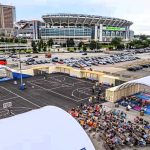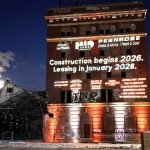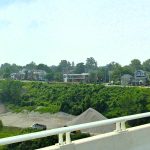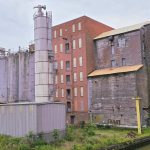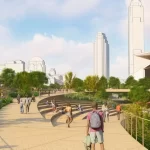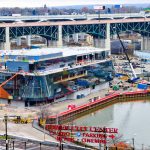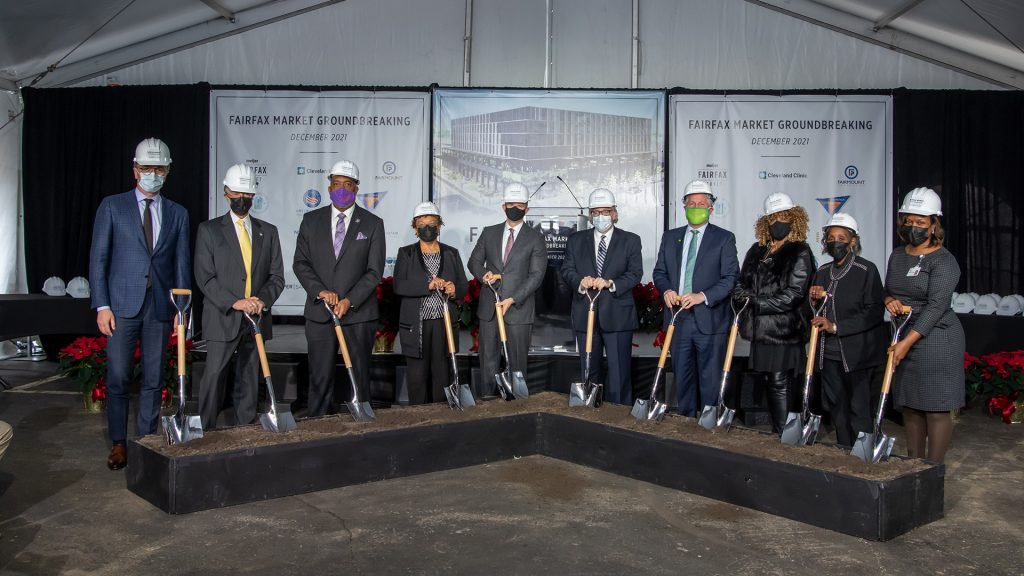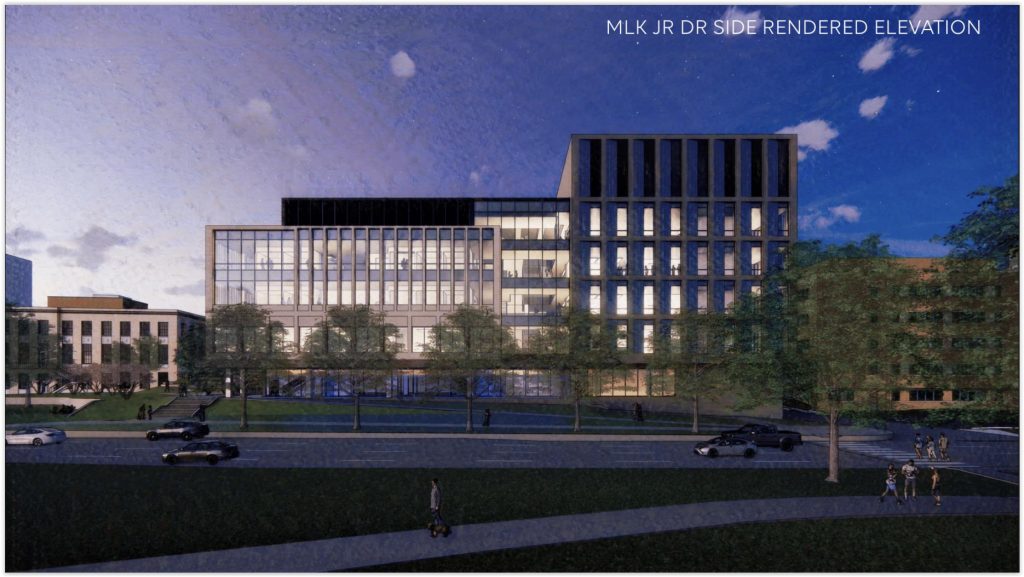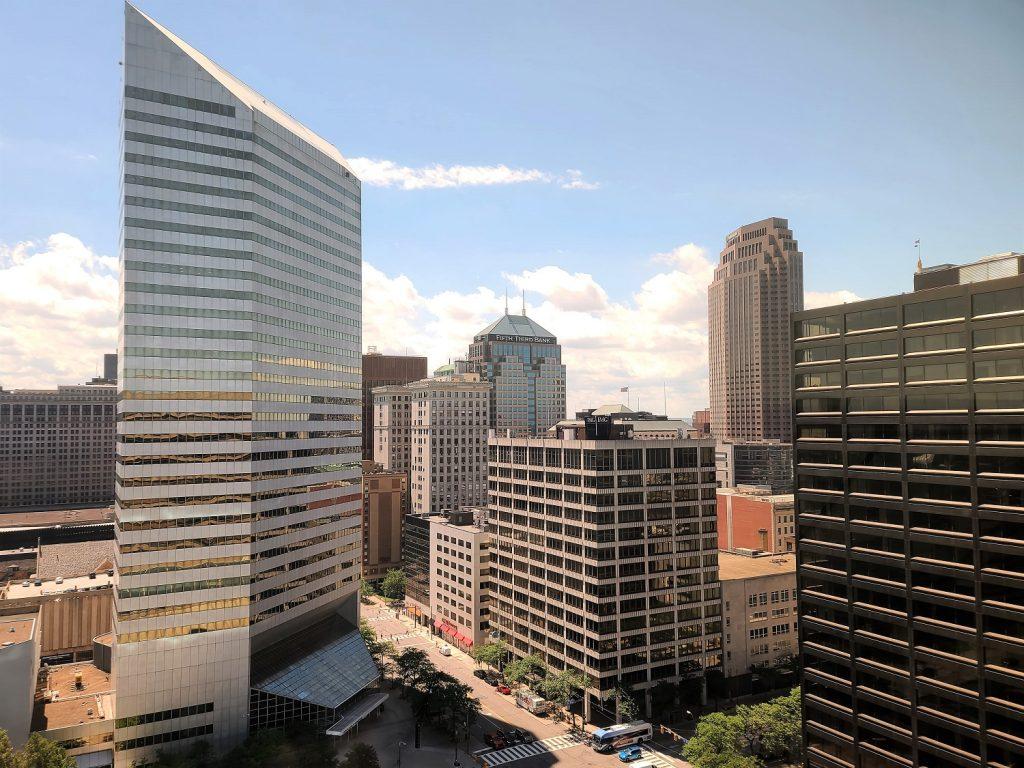Cleveland’s East Side, with one big exception, is a mess. It’s got some of the worst urban poverty in the United States and is the reason for Cleveland’s #2 ranking among America’s biggest cities in terms of percentage of residents living in poverty. Only Detroit outranks Cleveland in that regard.
Indeed, Cleveland’s East Side possesses large pockets of hyper-poverty, or concentrated poverty, where poverty rates exceed 40 percent. The national average poverty rate is 12.7 percent. Cleveland’s poverty manifests itself in violent crimes and property crimes, drug abuse and trafficking, gangs, broken families, poor educational attainment, poor housing conditions and poor personal health.
But Cleveland’s East Side also has one of the fastest growing job centers in the United States — University Circle. This includes the immediately surrounding areas of Little Italy plus parts of Fairfax and Glenville. Since 2000, University Circle has been growing at the rate of about 1,000 jobs per year to put it over 42,000 jobs. That makes it the fourth largest employment center in Ohio, trailing the downtown central business districts in Cleveland, Columbus and Cincinnati.
Employment in Cleveland’s “Education and Health Services” sector, focused in University Circle, has been growing at rates comparable to the tech sectors in Austin and San Jose. There are now more than 200,000 “eds and meds” jobs in Greater Cleveland, making it the largest job sector in the metropolitan area. This boomtown manifests itself in new commercial and residental buildings under construction, rapidly rising real estate prices, lots of new cafes and stores plus worsening traffic.
It is an oasis of incredible prosperity amid incredible squalor. It is a “Tale of Two Cities” much like what Charles Dickens wrote about in describing the best of times and the worst of times.
Thankfully, surrounding neighborhoods and others are trying to find ways to build off the success of University Circle. Numerous Cleveland-area governmental entities, corporations, institutions and foundations have embraced this vision through the Greater University Circle Initiative to create a blueprint to improve social conditions — workforce training, business development, education — as well as physical conditions such as new and renovated housing, shopping, offices and schools. Physical developments resulting from this 2014 blueprint are already appearing on the landscape.
In Cleveland, the success or failure of neighborhoods depends on the successes or failures of the Community Development Corporation (CDC) overseeing them. Each CDC is like a neighborhood-level City Hall with its staff managing safety, economic development, planning, building code enforcement as well as oversight of neighborhood amenities like a farmers markets and festivals.
To the North:
Most recently, the Famicos Foundation and the Glenville neighborhood began looking at ways to leverage success from the growing University Circle district next door. They branded an area along East 105th Street northward to Superior Avenue as “Circle North” and secured federal planning funds for enhancing public transportation linkages to University Circle. Plans for a relatively low-cost, highly visible transit corridor called Thrive 105-93 were developed and are awaiting public and private funds for construction.
A neighborhood land use plan was developed for the Circle North area along East 105th north to Superior, with a neighborhood-scale downtown proposed for that intersection. While the land uses currently at the intersection are underwhelming, the plans for developing that area are overwhelming. Famicos hired RDL Architects to develop the plans which are already seeing tangible progress.
The first development movement northward from University Circle actually began in 2008 when construction began on a new Veterans Administration Medical Center for Northeast Ohio, replacing a 50-year-old complex in suburban Brecksville. The new, $526 million Louis Stokes Cleveland VA hospital actually consolidates several Northeast Ohio facilities, including one renovated at Wade Park. It also provided a big economic boost to the north side of University Circle, bringing 1,350 employees and 200 residents.
Development and expansion of the VA hospital continues. Work is due to conclude by year’s end on redeveloping the brand-new Mt. Sinai Skills and Simulation Center at 1551 E. 105th (southeast corner of Wade Park Ave.) into the VA Women’s Health Center.
 |
| Looking southwest over the East 105th/Superior intersection, this conceptual view shows Famicos’ masterplan for creating a neighborhood-scale downtown for the Circle North section of Glenville (RDL). |
Just north of the VA is the Heritage Lane development, the first “Model Block” of the Famicos Foundation in Glenville. It consists of more than a dozen rehabilitated, historic, stately homes as well as six newly built townhomes. Additional new single-family homes are planned.
North of Heritage Lane is the first phase of the Circle North development. Now under construction, it features a four-story, 63-unit apartment complex with ground-floor retail being built by the Finch Group. Next stop on our northward trek is 1350 E. 105th, the Doan Classroom Apartments, 45 senior living units in the former Doan Elementary School redeveloped in 2012. And finally, just south of the intersection with Superior, is the new, permanent home of the Gateway/105 Farmers Market, with construction to be completed by year’s end.
To the South:
Some of the region’s most challenging socioeconomic conditions exist south of University Circle in mixed residential-industrial areas that were booming more than 100 years ago but faded after World War II. Much of this area is called the Forgotten Triangle and is so depopulated, parts have become an urban prairie.
But there are efforts underway to reverse this, led by the Fairfax Renaissance Development Corp. (FRDC) and the Burten Bell Carr Development Corp. (BBC). Both CDCs established long-range visions for redeveloping their neighborhoods then set forth in achieving those plans. Much of those plans center around the Opportunity Corridor — not just the new boulevard but also the Greater Cleveland Regional Transit Authority’s Red and Blue/Green rail transit lines in the corridor.
The new Opportunity Corridor is forcing the environmental cleanup of old industrial properties that have lain fallow for decades as few private sector investors would risk exposure to poisons and lawsuits from developing and using these polluted sites. Construction of the 3-mile, $330 million boulevard is directly cleaning dozens of properties it crosses or otherwise touches, making them viable for redevelopment. Investors are snapping up other properties near to the boulevard’s alignment.
The first phase of the Opportunity Corridor, which involves rebuilding East 105th into a major thoroughfare south of Euclid Avenue to Quincy Avenue, is nearly done. This includes clearing land along it for future commercial and residential development as part of the New Economy Neighborhood masterplan. This will also benefit from investments resulting from the Thrive 105/93 plan, as well as expansion of the East 105th/Quincy Red Line rail station now underway.
First to locate in the New Economy Neighborhood was the headquarters building for Explorys, a Cleveland company acquired by IBM. Its new headquarters is located on East 105th at Cedar Avenue. Additional developments and new housing are planned farther south toward the expanded RTA rail station.
Farther south in the Forgotten Triangle, an ambitious plan to fill an urban prairie with employers, urban agriculture and housing is slowly being realized by BBC. The neighborhood is home to an Urban Agriculture Innovation Zone, including large greenhouses and open-air farming to provide inner-city residents with healthy, affordable foods. The Green City Growers Cooperative greenhouse, 5800 Diamond Ave., sets on 10 acres and represents a $17 million investment including in innovating hydroponic technologies. Rid-All Green Partnership 8129 Otter Road, encompasses a 26-acre site and provides high-quality food to area stores and restaurants.
There are also growing corporate employers in this area who are focusing on food too, including Miceli Dairy and Orlando Baking Co. More light industries and warehouses are planned to meet the region’s growing demand for more facilities and capacity in these market sectors. For decades, due to a lack of clean and green land in and near impoverished neighborhoods with underutilized labor, light industries and warehouses were built at the urban fringe where there is little or no transit access to their jobs.
The Cleveland Federal Reserve estimates that only one-fourth of available jobs in the Greater Cleveland area are within a 90-minute one-way transit trip. Because of urban sprawl, the county-based sales tax resources that support the Greater Cleveland Regional Transit Authority have fallen by $75 million per year. Simultaneously, the state offers tiny fiscal support for transit, forcing the transit agency to consider cuts in service or a tax hike to avoid those cuts. Expansion of service to chase outward-sprawling jobs is out of the question. So, to address the spatial disconnect between jobs and job-seekers, the jobs will have to locate nearer to existing transit and where the region’s underutilized labor already resides.
The Opportunity Corridor could offer that opportunity, depending on how pedestrian access between transit stops and destinations is designed. It also may depend on where affordable housing and employers are located in regards to transit. BBC’s masterplan for the Kinsman neighborhood has residential planned south of the Blue/Green lines and north of the Red Line with commercial (light industry/warehousing) in between, mainly along the new boulevard.
BBC is leading the development of higher quality residential, both affordable and market-rate, along Kinsman Avenue. Currently, 36 single-family lease-purchase homes are being built between Kinsman and the Blue/Green lines. In 2016, a four-story, 60-unit apartment building was completed at Kinsman and East 79th Street. It continues the eastward march of new housing options along Kinsman built in phases under the Heritage View Homes brand. They include bright, spacious cluster homes and apartments that replaced decayed, outdated, crime-ridden public housing.
North of the Red Line, BBC led the renovation of the New Community Place apartments along East 79th and Woodland Avenue. This aging, inefficient apartment complex was de-densified from 147 units to 103. Next door, in 2015, BBC rehabilitated partially completed townhomes at Hill Place.
To the East:
Different suburban worlds exist east of University Circle. One is the vibrant, historic suburb of Cleveland Heights with its progressive citizenry living, working and playing in its many mixed-used districts centered on busy intersections set among beautifully forested residential streets. The other is East Cleveland, a city that has been home to some of Ohio’s worst corruption, urban blight, industrial abandonment, crime and hopelessness for 50 years.
Some redevelopment has spread along Euclid Avenue into East Cleveland, but only modestly so. Twenty CircleEast townhomes were built in 2012 on Euclid at Lakeview Road. Next to CircleEast, a solar farm was built in 2014 on six acres by Evergreen Energy Solutions for Cleveland Public Power to provide sustainable energy to the Cleveland Museum of Art, Severance Hall and other University Circle institutions.
While Cleveland Heights is a much more stable community with many University Circle workers and students living there, it has seen little development next to University Circle. That could soon change with the planned Top of The Hill development. This is a four-acre, city-owned property at the corner of Cedar Road and Euclid Heights Boulevard at the top of Cedar Hill.
| Top Of The Hill plan for a $75 million mixed-use development proposed at Cedar Avenue and Euclid Heights Boulevard in Cleveland Heights (Flaherty & Collins Properties). |
As a highly visible property at the gateway between the Heights and University Circle, developing this property has been a goal of the city for 50 years. The growth of University Circle in the 21st century has finally caused more serious interest in this site. In April, the city reached a development agreement with Flaherty & Collins Properties and approved tax increment financing legislation.
Proposed is a $75 million development with 250 market-rate luxury apartments, 15,000 square feet of first-floor restaurant, retail and commercial space, a parking garage containing 750 parking spaces, a nationally branded or boutique hotel, possibly as many as 20 for-sale townhomes, all necessary sidewalks, driveways, access ways and utility connections, public gathering and green spaces and the potential opportunity to include Class A office space.
 |
| Case Western Reserve University proposes to relocate student housing from the Hilltop site to the South Residential Village next to the Cedar-University rail station (CWRU). |
Another opportunity is Case Western Reserve University’s plans to relocate student housing from the Hilltop site to the South Residential Village, next to the newly rebuilt Cedar-University Red Line rail station. This will concentrate hundreds of undergraduate housing units at the more accessible bottom of the hill while opening up the Hilltop site for recreation and/or future development.
To the west:
The best was saved for last, as most of the spin-off development from University Circle has spread westward along Euclid Avenue and the HealthLine Bus Rapid Transit line toward Midtown and Downtown. Not only has housing spread west but so has commercial development, especially new business start-ups that were spun-off by medical and other innovations led by UC hospitals Cleveland Clinic, University Hospitals and the VA Hospital. The redevelopment process has followed a strategy set in 2010 called the Health Tech Corridor and led by the Midtown Inc. community development corporation with the assistance of the city, county, state and federal governments.
 |
| Hundreds of housing units, including new and rebuilt apartment buildings as well as market-rate townhouses have risen along Euclid Avenue west of University Circle (Midtown Inc.). |
One of the most daring investments was by the Geis Cos. and James Doyle. Leveraging public capital as well as their own, they built the Midtown Tech Park while the nation was still recovering from the Great Recession. It involved a 128,000-square-foot office and lab complex at 6700 Euclid Ave.
Since then, Baker Electric, 7100 Euclid, was renovated with a business incubator. The Agora building, 5000 Euclid, was renovated with offices and re-branded The Offices at Penn Square. Dealer Tire relocated its headquarters to the Victory Building, 7012 Euclid. The Phoenix, a rehabilitation of the Ace Fixtures building into offices, is at 1975 E. 61st St. Holiday Inn-Cleveland Clinic opened at the west end of the health campus, at 8650 Euclid. Farther west, on Euclid at East 70th, a Tru By Hilton is under construction.
The MidTown Tech Hive has opened in a renovated commercial building at 6815 Euclid. Link59, a newly built 60,000-square-foot office building has opened at East 59th and Euclid with a Dave’s supermarket rising just north of it on Chester. Next door, the UH Rainbow Center will open by the end of 2018. Meanwhile, old buildings north of Chester near East 90th are being demolished for a 94,000-square-foot office development called Core 90.
That’s just some of the commercial development. The residential development west of University Circle has been growing too. It started before the Great Recession with the Beacon Place/Woodhaven townhomes as the most notable. Located in the East 80s between Euclid and Chester, 172 market-rate townhouses were built from 2000 to 2017, with construction interrupted by the recession.?One Midtown Luxury Townhomes, a 23-unit development at Euclid and East 73rd, has prices starting at $400,000. They are selling before construction has finished on them.
The first phase of Greenbridge Commons, a 70-unit apartment building at Euclid and East 75th, was built in 2011 with the second phase, a 60-unit apartment building next door, completed this year. And, following a devastating fire in 2011, the historic Erie Square Apartments, 7621 Euclid, were completely rebuilt with modern interiors and features and has a waiting list for occupancy.
While there is a lot of work left to do to rebuild the neighborhoods surrounding University Circle so that they can share in the prosperity of that booming district, there is progress being made. If the national and local economy continue to grow and the public/private sectors remain organized to capitalize on it, there is every reason to expect that the projects and plans outlined in this article will continue to leverage the boomtown.
END







